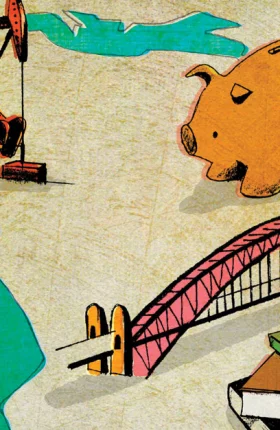The September 2015 United Nations summit for reaching agreement on sustainable-development goals (SDGs) takes place against a depressing backdrop. Seemingly every day, we learn of new scenes of crisis, poverty, human displacement, and environmental damage. The urgent need for a concerted global effort to tackle the root causes of these disasters through sustainable development has never been stronger.
Nor can anyone doubt the hard work that has gone into drawing up the 17 SDGs to be discussed and, it is hoped, agreed upon in New York. A huge effort of a great many people has gone into ensuring that the goals are focused on all that needs to be done. But it is this comprehensive approach, which created 169 subgoals within those 17 broad goals, that poses tough challenges for individual countries.
Although the agreement of world leaders this week is essential, it is only a first step. National governments around the globe—not the UN—must take the lead in turning these ambitions into real improvements in the lives of their citizens. Success will hinge on whether individual governments identify the right priorities, establish policies that deliver progress, and ensure that implementation has the desired impact.
The Boston Consulting Group’s work in developing countries has revealed the crucial importance of governments moving to set clear priorities and providing leadership to the international partners within their countries. When they do both things effectively, impressive progress can be achieved.
A good example is Ethiopia. In the late 1990s, its government began a concerted effort to address serious health issues, creating a 20-year health-care agenda and raising significant funding from donors to support the effort. As a result, Ethiopia improved its health care and outcomes more than any other country, according to BCG’s Sustainable Economic Development Assessment (SEDA), a diagnostic tool we developed to determine the relative well-being in countries as measured by such factors as health, education, and employment.
Choosing the right priorities must start with an accurate determination of what the greatest problems are. The results don’t always correspond with conventional wisdom. There is, for example, a widespread belief that Africa’s biggest challenge is in health, but this ignores the country’s remarkable progress of recent years.
This progress is underlined by the findings of our SEDA research, which shows that 19 of the top 20 countries in which health is improving are in Africa.
That improvement contrasts with the findings on education: sub-Saharan African countries hold 23 of the bottom 25 places, and, unlike in health, they are not making much progress. Putting this right requires not only that governments increase their efforts but also that they initiate a completely new dialogue with aid agencies and international organizations.
The effective setting of priorities also requires governments—and their international partners—to look beyond the most obvious development areas such as health and education into the more politically sensitive areas such as the level of income inequality, the strength of civil society, and the quality of governance. These areas can be particularly important. Our analysis has found that the biggest difference between countries that are above average in overall well-being and those that are below average in overall well-being is in the quality of governance.
Countries also have to take into account—in a way that the experts drawing up the SDGs do not—the ways that some of the goals can act against each other. Take, for example, economic growth and environmental protection. It is no accident that China and India—two of the countries that have, in recent years, recorded the strongest rises in GDP—hold the bottom slots globally in terms of their SEDA environmental scores.
Our most recent SEDA research highlights how difficult it is to achieve success in both areas. In many cases, poverty reduction hinges on GDP growth. We’ve found, however, that countries that posted high GDP growth tended to fall back in terms of environmental quality.
The SDG goals also aim to reduce inequality within and among countries. But our SEDA analysis found that in both Asia and Africa, countries with high levels of overall well-being had greater income inequality than those nations with relatively low levels of well-being.
Achieving a healthy balance of potentially conflicting goals is not impossible. Poland, for example, has posted healthy GDP growth but is also making impressive progress in protecting the environment. In Latin America, most of the countries with the highest levels of overall well-being also have relatively low levels of income inequality.
But the potential for conflict among the SDGs is another challenge that governments and their international partners must carefully think through. Such conflicts confirm the importance of an accurate assessment of the state of a country for determining which efforts can achieve the best outcomes and for charting progress.
The UN and international organizations can play an important role. They can help governments gain a clear understanding of how other countries have overcome similar problems and can provide support by establishing an effective system for collecting data and tracking improvements so that red flags can be raised early when interim goals are in danger of being missed. This is one of the areas that leaders most commonly cite when they talk to us about their need for additional help.
The SDGs rightly set big ambitions for our world. But the sheer size of these ambitions poses difficult challenges for countries. Achievement of the goals will require governments and their leaders to provide focus, good governance, and strong institutions. The hard work has only just begun.





